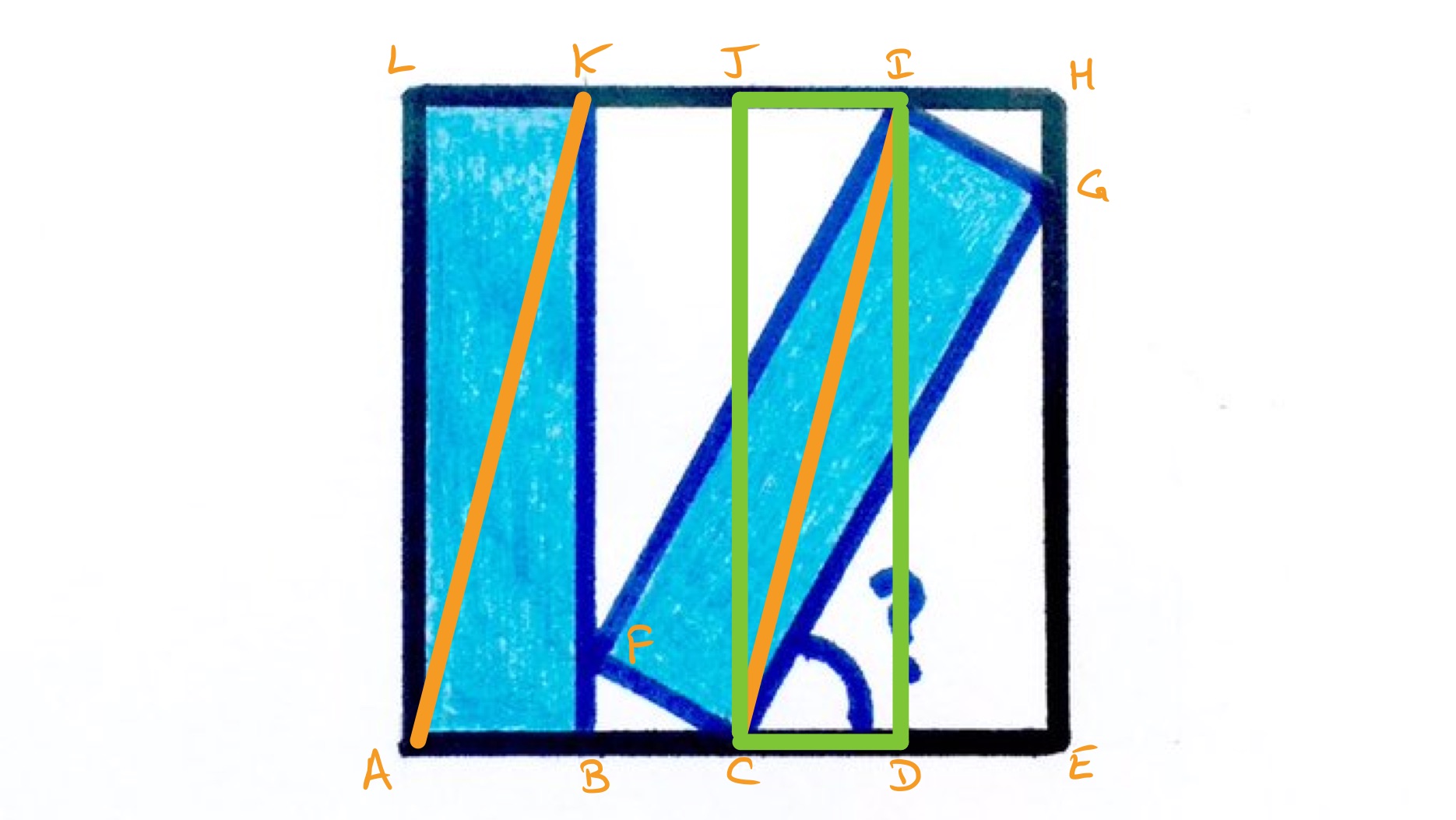Notes
two congruent rectangles in a square solution
Two Congruent Rectangles in a Square

Two congruent rectangles are packed into a square. What’s the angle?
Solution by Similar Triangles and a lot of algebra

With the points labelled as above, work in units so that the outer square has side length . With this convention, let be the length of , of , and of .
Triangles and are similar, with scale factor , so has length . Also, triangle is congruent to so has length . Therefore, has length and has length . These are both equal to , so:
Added these together gives , so . Likewise, subtracting gives . So:
Triangle is right-angled, and has length , so applying Pythagoras' theorem shows that which leads to:
Either by inspection or by noting that there is a solution where the two rectangles each occupy half the square, this equation can be seen to have a root at . Dividing out by results in the quadratic:
which has roots . As is greater than , the solution must be . Substituting in for gives . This means that is half the length of , and so triangle is half an equilateral triangle so angle is .
Solution by Lengths in Rectangles and Equilateral Triangles
With the points labelled as in the diagram above, is a diagonal of the blue rectangle so is the same length as . The quadrilateral therefore has two sides the same length ( and ) and the other two sides parallel. It is therefore a parallelogram and in particular is parallel to .
This means that reflecting rectangle in produces the rectangle with along and along . So this is a horizontal translate of rectangle . In particular, has the same length as and is directly below .
Triangles and are congruent, so and have the same length, and so and have the same length. This means that and have the same length, so is half the length of and thus half the length of .
As above, this means that is half an equilateral triangle so angle is .